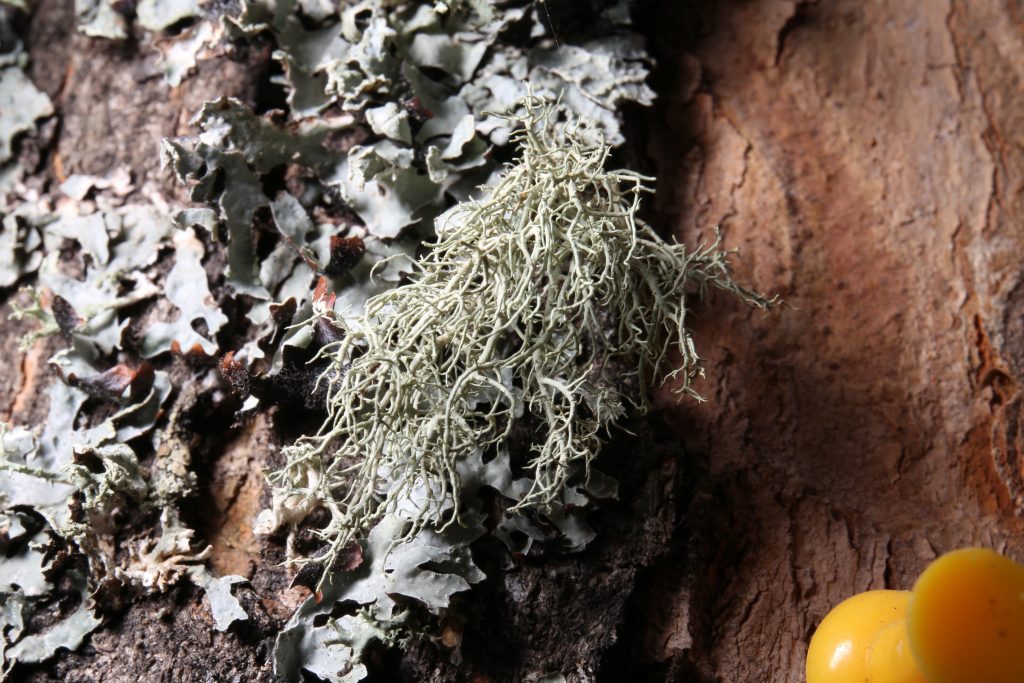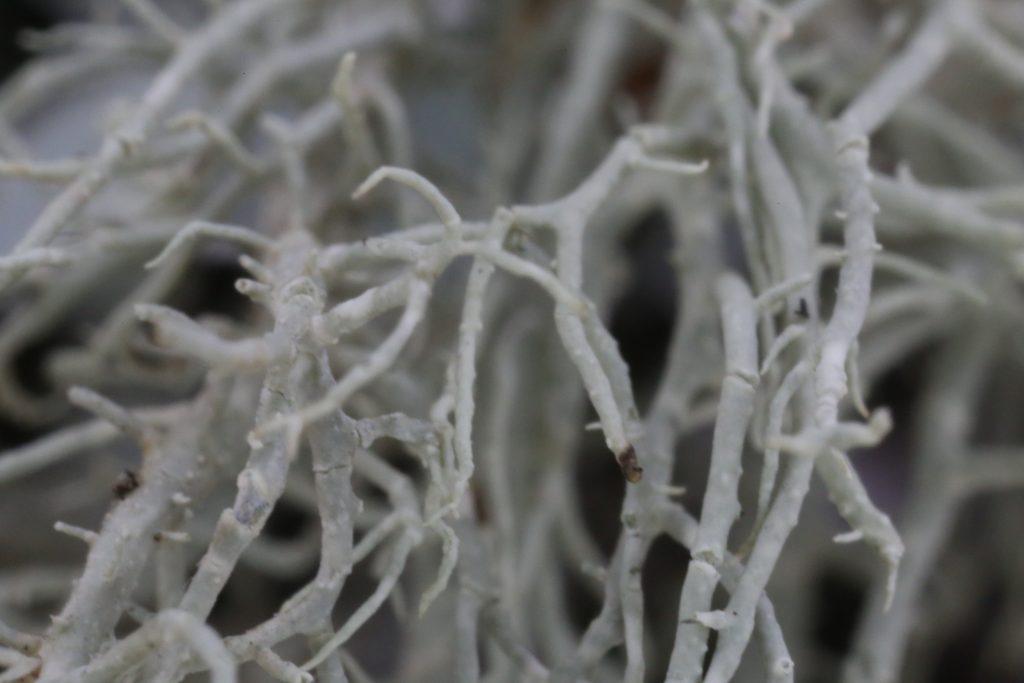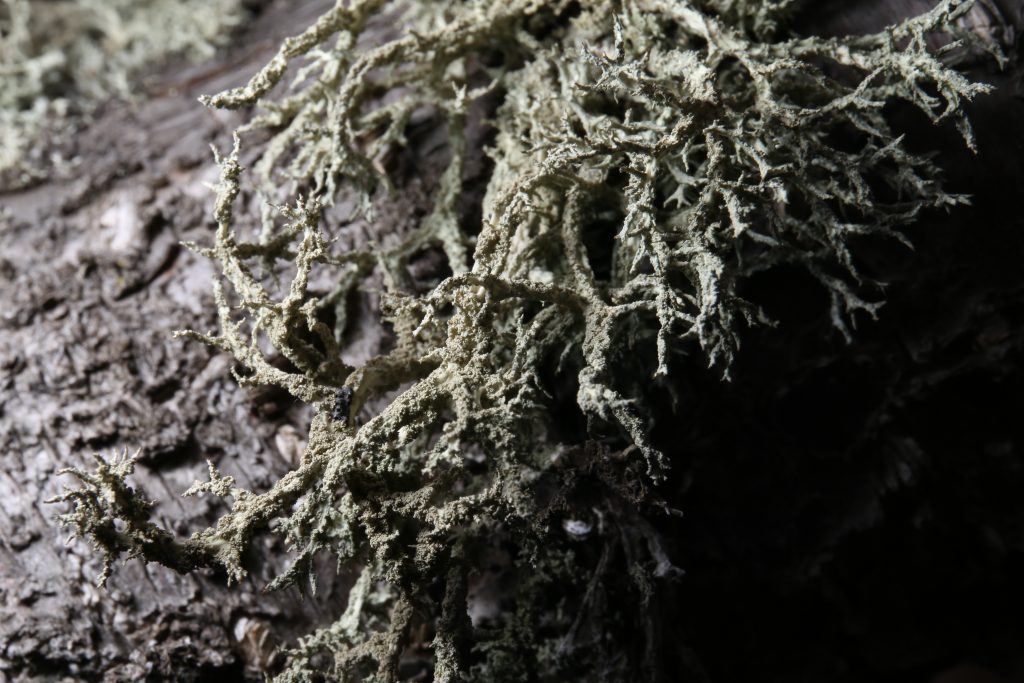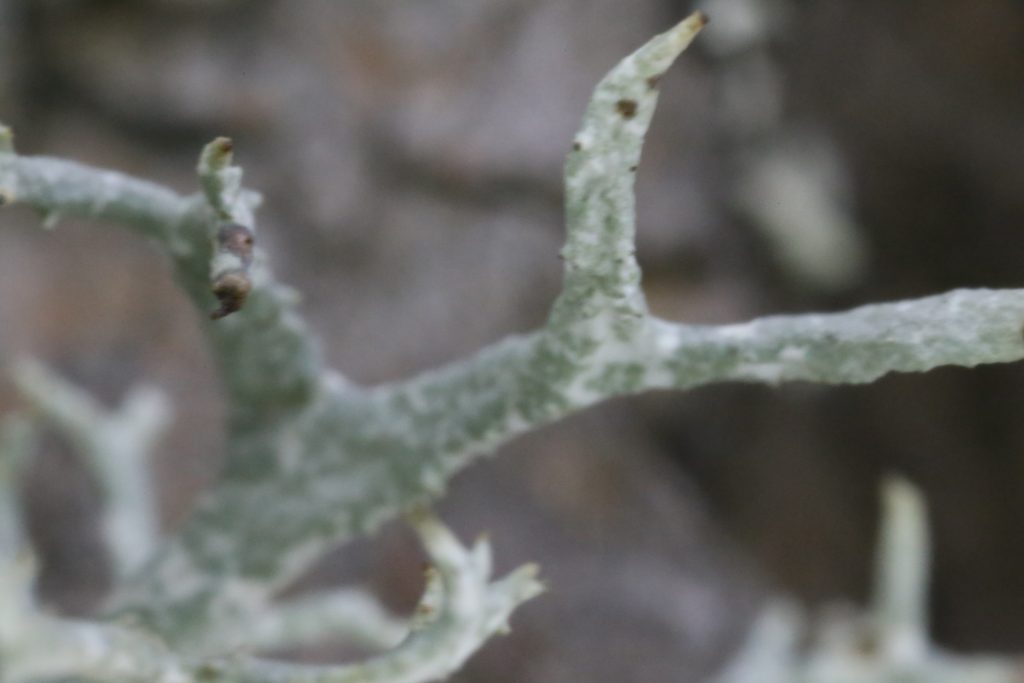Getting to Stop 4 - trees on the center and East side of Centennial Building courtyard
The courtyard is planted with a variety of trees - along the building are crabapples (not shown), which attract flocks of waxwings in Winter. The most noticeable evergreen tree in the center is White or Colorado fir (Abies concolor). The two smaller maples in the center are suffering frost damage on their trunks (Fig 4-1). Near the Japanese lilacs is a large-leaved american linden (Tilia americana). Conspicuous in the Fall are the large paper birch (Fig. 4-2) and bur oak (Fig 4-3)..
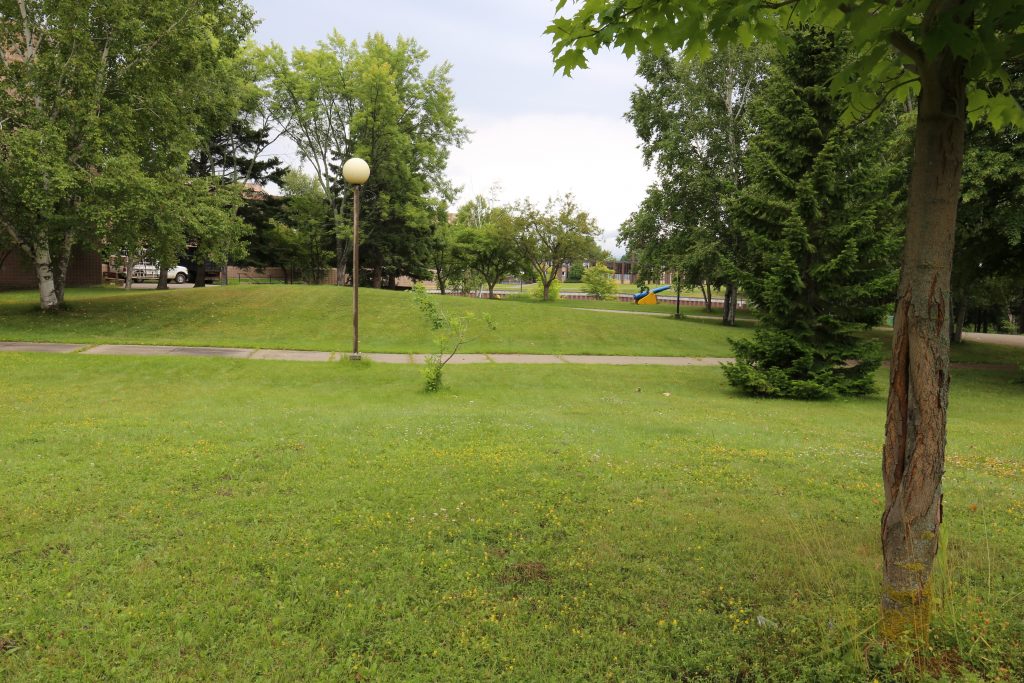
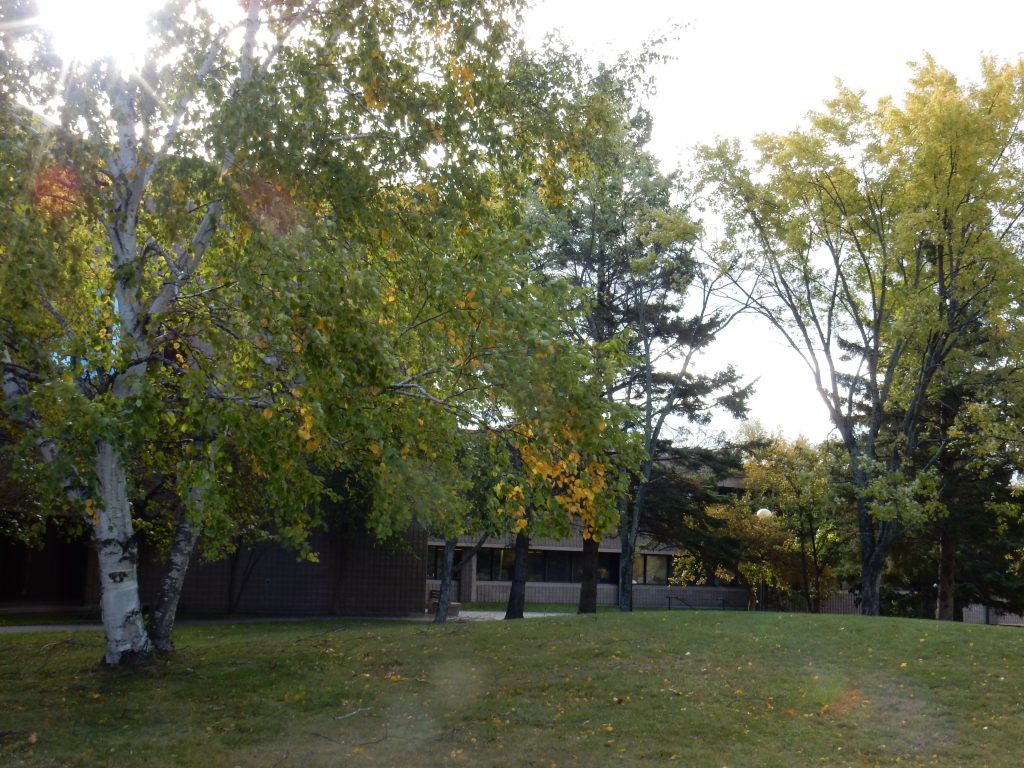
Fig. 4-2 Large paper birch (Betula papyrifera) looking East toward lichen covered silver maples (Acer saccharinum)
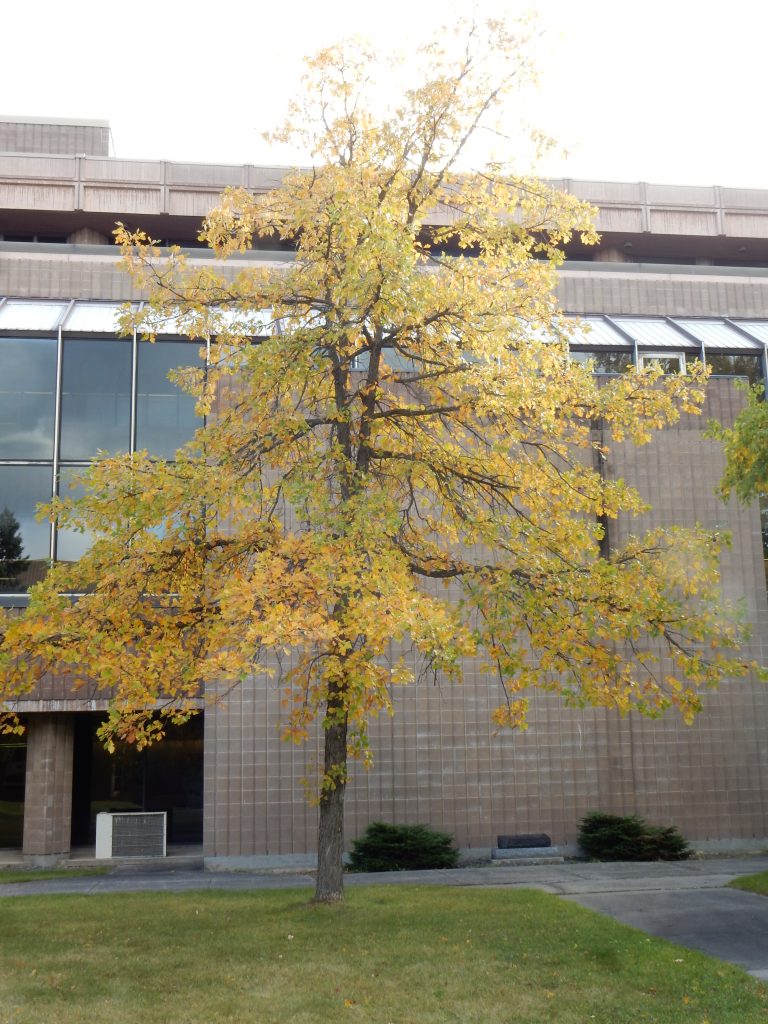
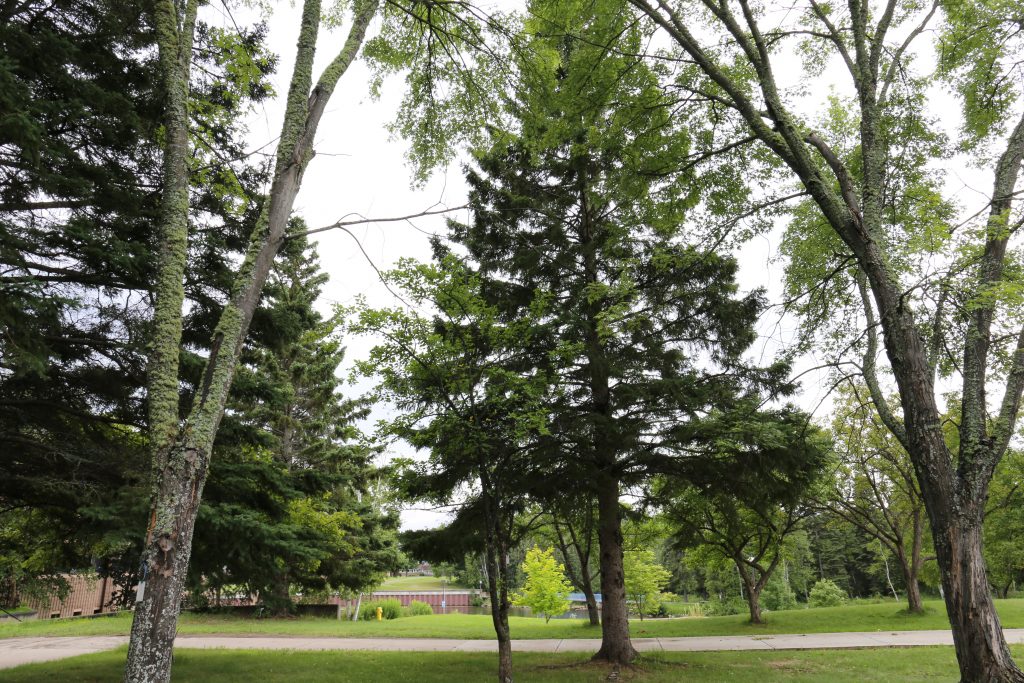
Site 4 is dominated by three lichen covered trunks of silver maples (Fig. 4-4). Before turning your attention to lichens, note the nanyberry (Viburnum lentago) near the building wall (Fig. 4-5). This small tree has edible berries.
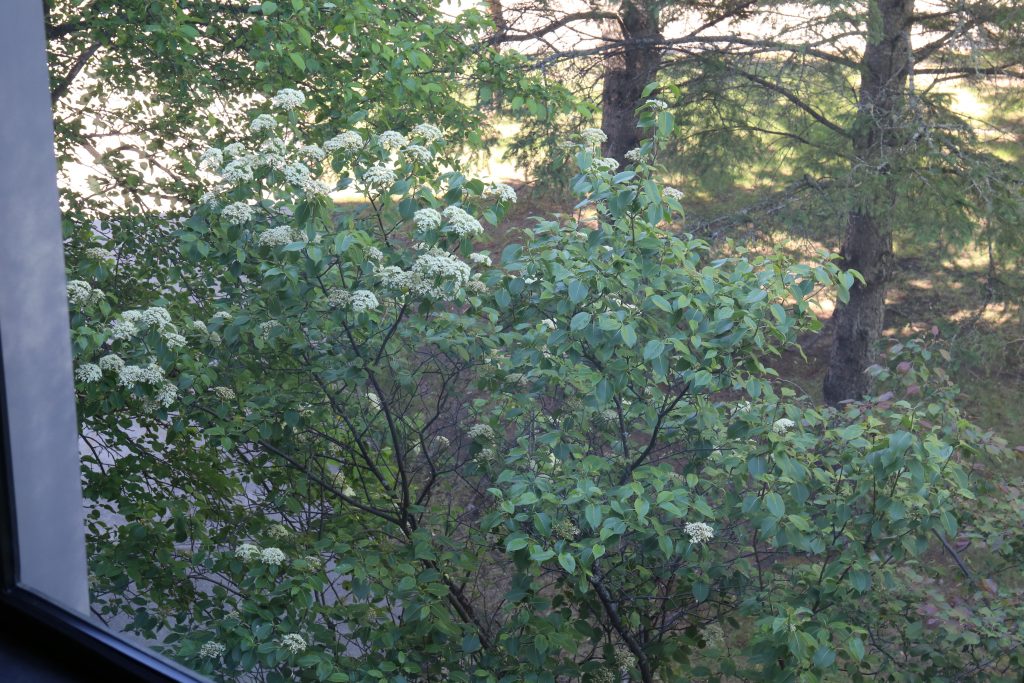
Lichens
Before looking up on the lichen covered trunks of the trees, look at the grassy ground. Here, interspersed with grass you may see dog lichen (Peltigera canina, Fig. 4-6). It has fairly large lobes and white fuzzy (tomentose) rhizines on the bottom surface. This is a typical representative of a fairly large genus. Peltigeras are leafy (foliose) and generally grow on the ground or on low vegetation such as mosses.
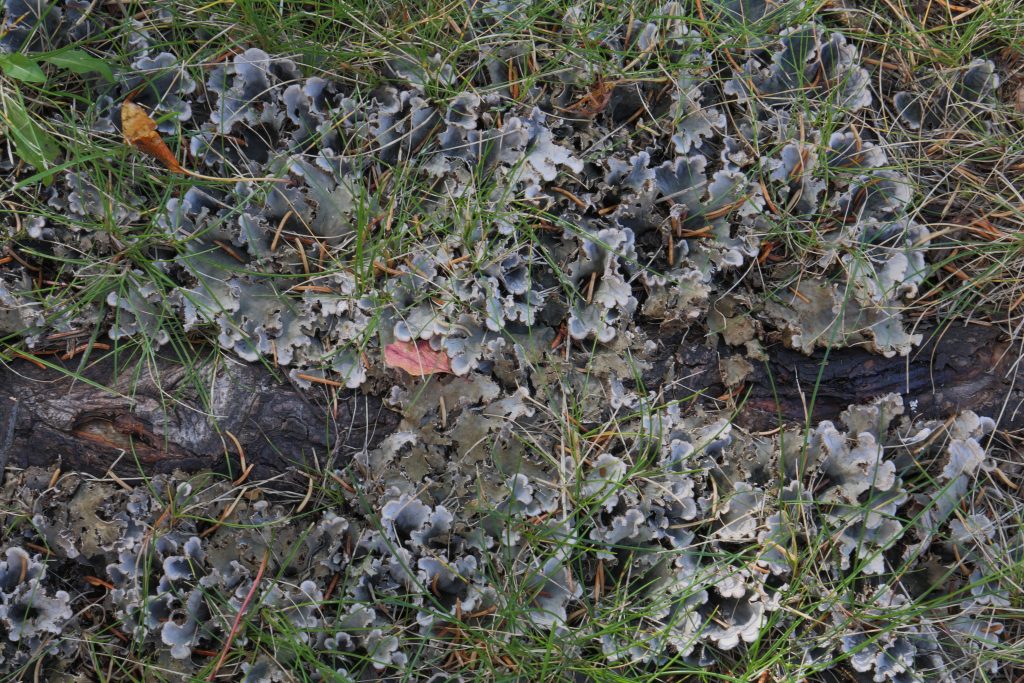
Below are finally two of the shrubby (fruticose) lichens, the clusters with "skinny" thallus branches are Usnea, and the ones with more flattened branches covered by powdery soredia are Evernia. Usnea species are easily recognized by pulling any thallus strand apart - one part will likely have a central strand (core) sticking out and the other will be hollow. There is a large variety of Usneas (Figs 4-7 and 4-8), some species producing long "old man beard" structures.
